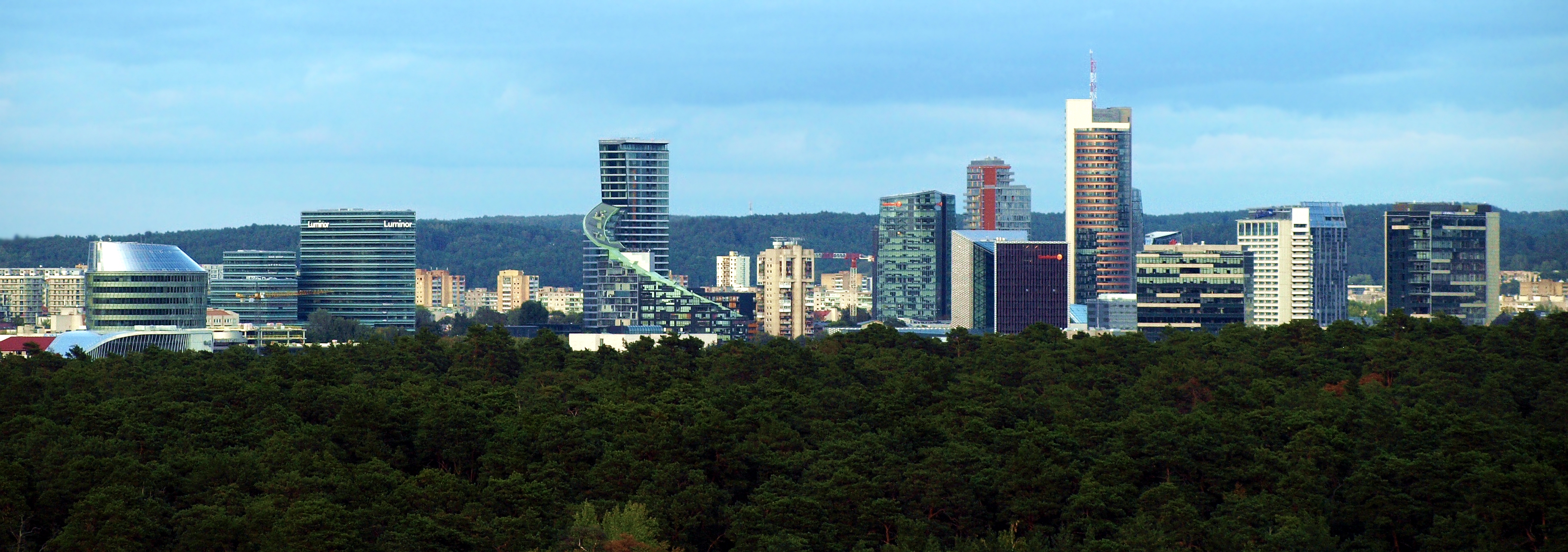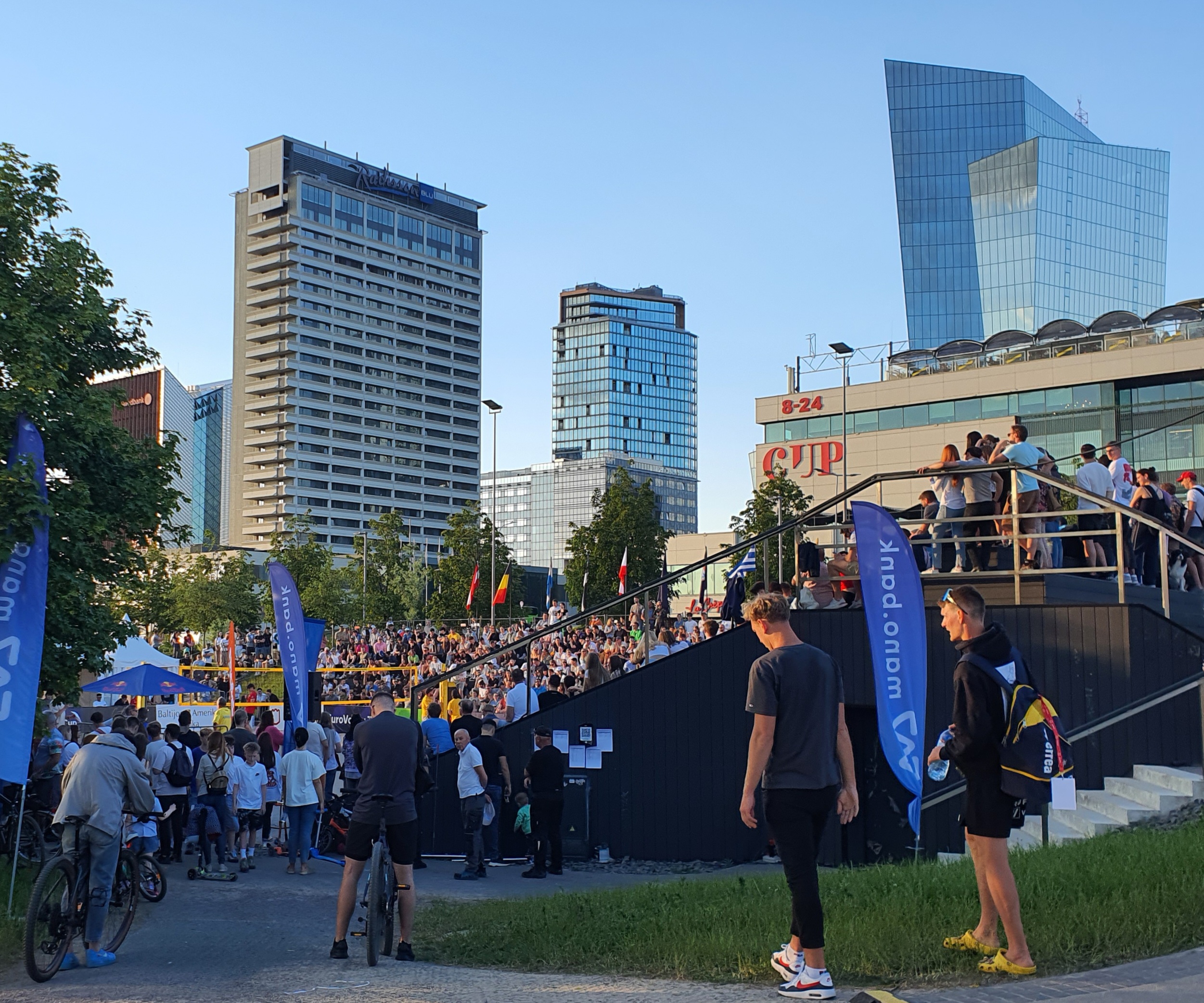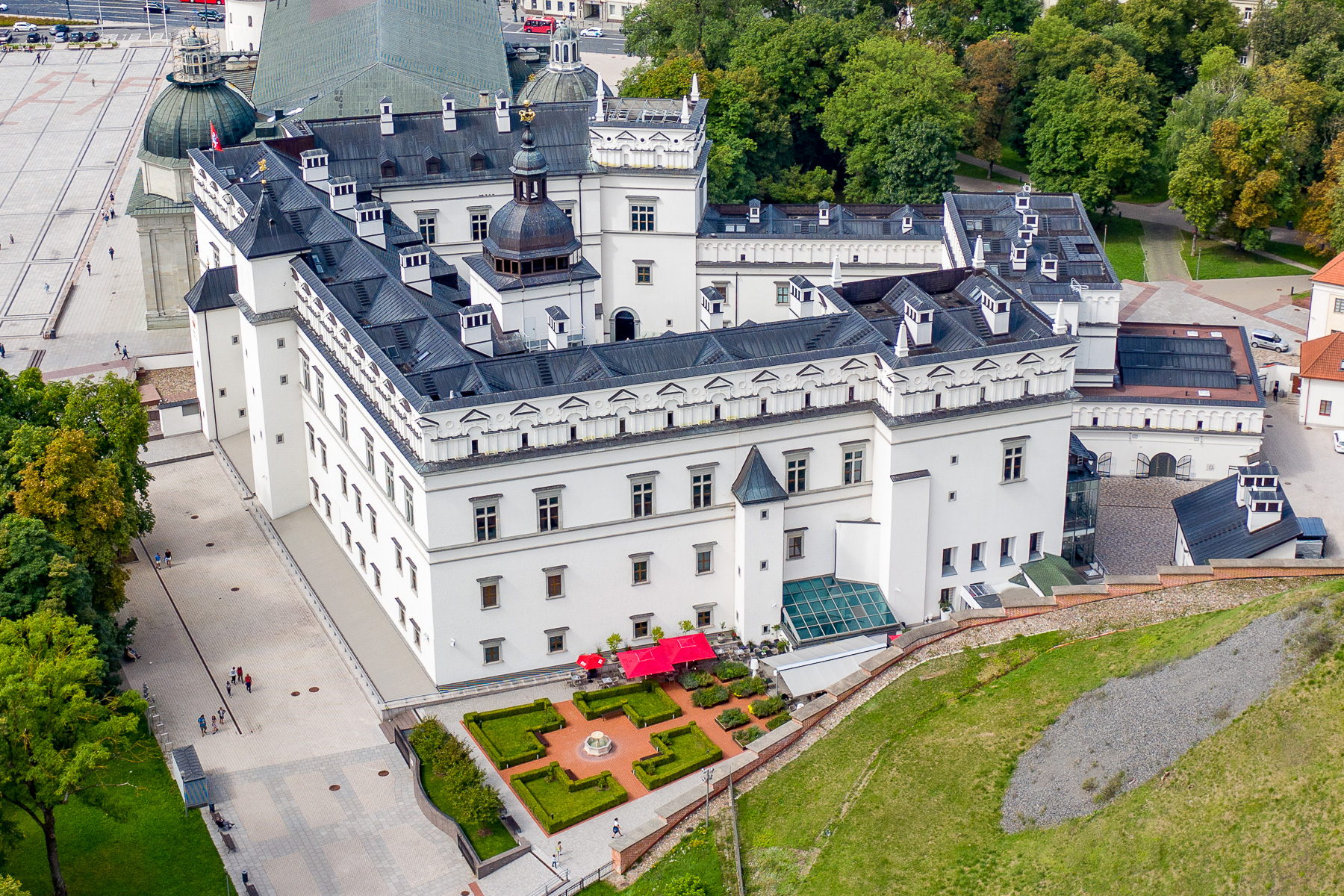|
é nipiéÀkás
é nipiéÀkás is a neighborhood in Vilnius, the capital of Lithuania. Vilnius Central Business District is a part of é nipiéÀkás. Located on the north bank of the river Neris, it became the site of a modern business district with skyscrapers which, however, mix with some historical wooden architecture. Until recently, the area was a small historical suburban village north of the Vilnius Old Town. Several skyscrapers, including Europa Tower business center, have been erected since the turn of the millennium. It continues to rapidly expand with major projects for modern commercial and apartment complexes as well as recreational areas. An area with late 19th- and early 20th-century wooden houses, popularly referred to as the Shanghai district, is now under cultural protection and preservation. é nipiéÀkás is also home to the Kalvarijos Market. Etymology ''é nipiéÀkás'' was named after a rich merchant Povilas é nipka (é nipis), who lived in the 16th century, and owned the land pl ... [...More Info...] [...Related Items...] OR: [Wikipedia] [Google] [Baidu] |
Vilnius
Vilnius ( , ) is the capital of and List of cities in Lithuania#Cities, largest city in Lithuania and the List of cities in the Baltic states by population, most-populous city in the Baltic states. The city's estimated January 2025 population was 607,667, and the Vilnius urban area (which extends beyond the city limits) has an estimated population of 747,864. Vilnius is notable for the architecture of its Vilnius Old Town, Old Town, considered one of Europe's largest and best-preserved old towns. The city was declared a World Heritage Site, UNESCO World Heritage Site in 1994. The architectural style known as Vilnian Baroque is named after the city, which is farthest to the east among Baroque architecture, Baroque cities and the largest such city north of the Alps. The city was noted for its #Demographics, multicultural population during the PolishãLithuanian Commonwealth, with contemporary sources comparing it to Babylon. Before World War II and The Holocaust in Lithuania, th ... [...More Info...] [...Related Items...] OR: [Wikipedia] [Google] [Baidu] |
Vilnius Central Business District
The Vilnius Central Business District () is a rapidly developing business district in é nipiéÀkás eldership of Vilnius, Lithuania. It is Lithuania's most important business district and the largest of its kind in the Baltic States. Between 2000 and 2018, more than of floor area was added to Vilnius CBD. Most of the growth occurred after 2010, with intense growth continuing after 2020. Since 2022, Vilnius has been experiencing a large influx of foreign professionals, many of whom work in the CBD. This area is called ''Naujasis miesto centras'' and abbreviated ''Vilniaus NMC'' in Lithuanian. The Baltasis tiltas (White Bridge) connects the area with the Naujamiestis eldership. Vilnius government has created a virtual 3D map of the area where present and future buildings can be seen. Buildings and organizations Many of Lithuania's high-rise office buildings are located here, including Europa Tower, the tallest office building in the Baltic states. As of December 202 ... [...More Info...] [...Related Items...] OR: [Wikipedia] [Google] [Baidu] |
Elderships Of Lithuania
A ''senié¨nija'' (in English: eldership, elderate, ward, parish, or subdistrict) is the smallest Subdivisions of Lithuania, administrative division of Lithuania. An eldership may comprise a very small region consisting of few villages, one single town, or a part of a big city. Elderships vary in size and population depending on their location and nature. A few elderships make up a municipality. é ilainiai, Dainava (Kaunas), Dainava, Verkiai, é§irmé¨nai and PaéÀilaiáiai are the most populous elderates, with population counts over , around twice the population of some entire municipalities. Elderships manage small-scale local matters, such as repairing pavements and dirt roads, and keep records on all families living in the eldership. The premise of the concept is that — unlike in higher administrative divisions — an Elder (administrative title), elder (the leader of the eldership) could have time to talk to every person in the eldership who wants to. Modern Lit ... [...More Info...] [...Related Items...] OR: [Wikipedia] [Google] [Baidu] |
Europa Tower
The Europa Tower () is a high-rise located in Vilnius CBD, Lithuania. It is the tallest building in the Baltic states. It is located on Konstitucijos Avenue in é nipiéÀkás, a district of Lithuania's capital Vilnius. It rises 148 meters above the ground. It was designed by the Vilnius-based ''Audrius Ambrasas Architects Company''. Dominating the skyline of the newly developing New City Center, the building was completed and officially opened on 1 May 2004, as part of Lithuania's celebrations upon entering the European Union. The building caused some controversy among some of the public and some watchdog groups because of its interference with the historic skyline of the Vilnius' Old Town. Despite varying opinions, the tower is now often regarded as a modern landmark of the Lithuanian capital. There is an observation deck on the open roof terrace at . Project history The first announcements concerning the building appeared on the Internet in 2002, when some computer-generated re ... [...More Info...] [...Related Items...] OR: [Wikipedia] [Google] [Baidu] |
Green Bridge (Vilnius)
The Green Bridge () is a bridge over the Neris River in Vilnius, Lithuania, that connects the city center with the district of é nipiéÀkás. The original 16th-century bridge was the oldest bridge in Vilnius. History The first bridge dated from 1536. It stood closer to the present-day Mindaugas Bridge. It was a wooden covered bridge with brick and stone piers. It had a second floor with apartments for toll collectors. Because its builder Ulrich Hosius wanted to recoup the cost by collecting tolls, Grand Duke Sigismund the Old granted him a privilege prohibiting others from building any other bridges across Neris between Kernavá and (now in Belarus) or to offer other crossing services between Verkiai and Paneriai. The bridge was burned by retreating Lithuanian Army commanded by Janusz Radziwiéé after the Battle of Vilnius (1655). A new project was planned in 1673, which envisioned a span of between piers ã the longest known span at the time. However, an early spring a ... [...More Info...] [...Related Items...] OR: [Wikipedia] [Google] [Baidu] |
Jesuits
The Society of Jesus (; abbreviation: S.J. or SJ), also known as the Jesuit Order or the Jesuits ( ; ), is a religious order (Catholic), religious order of clerics regular of pontifical right for men in the Catholic Church headquartered in Rome. It was founded in 1540 by Ignatius of Loyola and six companions, with the approval of Pope Paul III. The Society of Jesus is the largest religious order in the Catholic Church and has played significant role in education, charity, humanitarian acts and global policies. The Society of Jesus is engaged in evangelization and apostolic ministry in 112 countries. Jesuits work in education, research, and cultural pursuits. They also conduct retreats, minister in hospitals and parishes, sponsor direct social and humanitarian works, and promote Ecumenism, ecumenical dialogue. The Society of Jesus is consecrated under the patron saint, patronage of Madonna della Strada, a title of the Blessed Virgin Mary, and it is led by a Superior General of ... [...More Info...] [...Related Items...] OR: [Wikipedia] [Google] [Baidu] |
Jan Kazimierz Sapieha The Elder
Jan Kazimierz Sapieha the Elder (; died 1730) was a grand hetman of Lithuania from 1708 to 1709. Life He was the son of Franciszek Stefan Sapieha, father of Piotr Paweé Sapieha and Paweé Sapieha. A supporter of Staniséaw Leszczyéski, he took part in many battles of the Great Northern War. Charles XII of Sweden considered him a good commander, and influenced his relative, Jan Kazimierz Sapieha the Younger, to pass the grand hetman post to him. He defeated Grzegorz Antoni Ogiéski at the battle of Lachowce, but in 1709, after the Russian victory of Swedes at Battle of Poltava, he surrendered to Augustus II the Strong and was forced to abandon his hetmanship. In 1716, he joined the anti-Saxon Tarnogrû°d Confederation. In the last years of his life he became a supporter of the Russian Empire, in particular, of Catherine I of Russia, for which in 1726 he was rewarded with a rank of field marshal, and in 1727, governor-general of Saint Petersburg (Saint Petersburg Governorate) an ... [...More Info...] [...Related Items...] OR: [Wikipedia] [Google] [Baidu] |
Sapieha
The House of Sapieha (; ; ; ) is a Polish-Lithuanian noble and magnate family of Ruthenian origin,ÅÙŧîîŤţůŢÅçÅÇîî ÅÅÅ. ÅÂ.2, ůîî. "ÅÀůŢÅçÅ°î" descending from the medieval boyars of Smolensk and Polotsk. Vernadsky, George. ''A History of Russia''. New Haven. Connecticut: Yale University Press. 1961online/ref> The family acquired great influence and wealth in the PolishãLithuanian Commonwealth during the 16th century. History The first confirmed records of the Sapieha family date back to the 15th century, when Semen Sopiha () was mentioned as a writer (scribe) of the then King of Poland and Grand Duke of Lithuania, Casimir IV Jagiellon () for the period of 1441ã49. Semen had two sons, and . Possibly, the family of Semen Sopiha owned the village of Sopieszyno near Gdansk, which they left because of the Teutonic invasion. Sopieszyno is one of the oldest Pomeranian villages. The records have it that already in the 11th-12th centuries it was a knightly ... [...More Info...] [...Related Items...] OR: [Wikipedia] [Google] [Baidu] |
Ogiéski Family
The House of Ogiéski, feminine form: Ogiéska, plural: Ogiéscy (, ) was a noble family of Grand Duchy of Lithuania and Poland (later, the PolishãLithuanian Commonwealth), member of the Princely houses of Poland and Lithuania. They were most likely of Rurikid stock, related to Chernihiv Knyaz family, and originated from the Smolensk region, incorporated into the Grand Duchy of Lithuania in approximately the fourteenth century. The family bears its name from Uogintai (, in present-day KaiéÀiadorys district of Lithuania), a major estate of the family in Lithuania that was granted to precursor of the family, Knyaz Dmitry Hlushonok (d. 1510), by Grand Duke of Lithuania Alexander in 1486. An important family in the Grand Duchy of Lithuania, the family had produced many important officials of the state, as well as several notable musicians. The political stronghold of the Ogiéski clan was the Vitebsk Voivodeship, where a palace was built in the first half of the seventeenth cen ... [...More Info...] [...Related Items...] OR: [Wikipedia] [Google] [Baidu] |
Grand Duke Of Lithuania
This is a list of Lithuanian monarchs who ruled Lithuania from its inception until the fall of the Grand Duchy of Lithuania in 1795. The Lithuanian monarch bore the title of Grand duke, Grand Duke, with the exception of Mindaugas, who was crowned king in 1253. Other Lithuanian rulers, such as Vytautas the Great, also attempted to secure a royal coronation, but these efforts were unsuccessful.Nadvecká, Ineta (6 July 2019Trys Lietuvos karaliai: vienas tikras, vienas nelabai ir vienas beveik''Lithuanian National Radio and Television, LRT''. Until 1569, the Lithuanian monarchy was hereditary. In 1386, Grand Duke Jogaila was elected King of Poland. From that point onward, with some interruptions, the two states were united in a personal union, sharing a common ruler until 1569, when they were formally merged by the Union of Lublin to form the PolishãLithuanian Commonwealth. The monarch of this new state was elected in a free election by the entire nobility. From the Christianizat ... [...More Info...] [...Related Items...] OR: [Wikipedia] [Google] [Baidu] |




